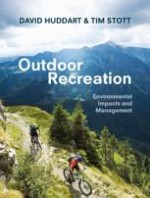2019 | OriginalPaper | Buchkapitel
14. Recreational Scuba Diving and Snorkelling
verfasst von : David Huddart
Erschienen in: Outdoor Recreation
Aktivieren Sie unsere intelligente Suche, um passende Fachinhalte oder Patente zu finden.
Wählen Sie Textabschnitte aus um mit Künstlicher Intelligenz passenden Patente zu finden. powered by
Markieren Sie Textabschnitte, um KI-gestützt weitere passende Inhalte zu finden. powered by
